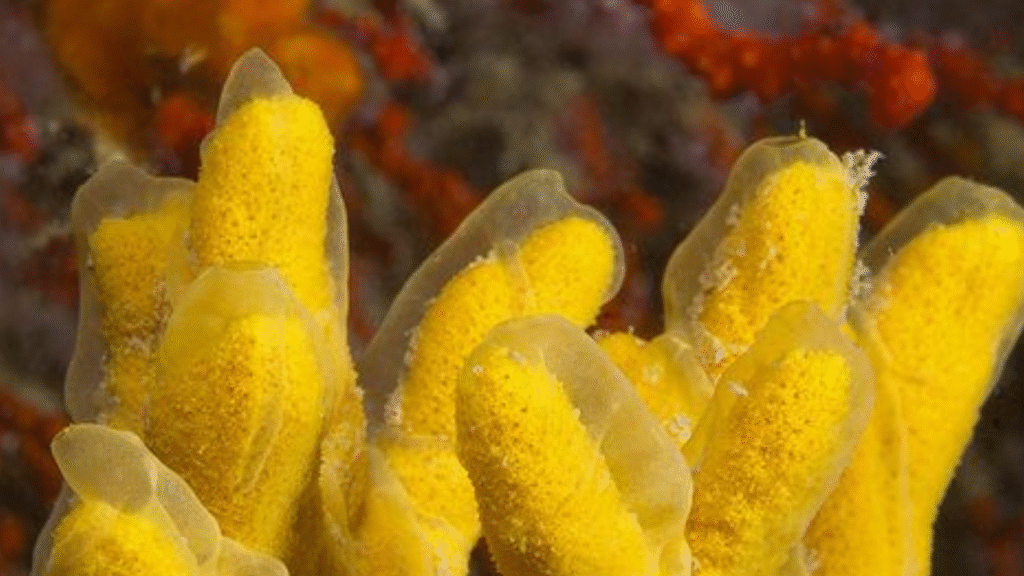Axinella Cannabina: The Elegant Yellow Sponge of the Mediterranean
Axinella cannabina is a fascinating species of sponge that thrives mainly in the Mediterranean Sea and parts of the eastern Atlantic Ocean. Recognized for its elegant, branching structure and vibrant yellow to orange coloration, this marine sponge plays an essential role in underwater ecosystems. In this article, we’ll dive deep into the world of Axinella cannabina, exploring its characteristics, habitat, ecological significance, and importance to marine biodiversity.

What is Axinella Cannabina?
Axinella cannabina is a species of demosponge belonging to the family Axinellidae. Unlike the more common sponges we might imagine, this species grows in tall, thin, and sometimes fan-shaped forms that resemble underwater bushes or small trees. Its branching structure makes it stand out among other benthic (seafloor-dwelling) organisms.
Typically, the sponge exhibits shades of yellow, gold, or orange, depending on environmental factors like light exposure and water quality. It has a soft, yet resilient texture, allowing it to sway gently with underwater currents.
Where is Axinella Cannabina Found?
This beautiful sponge is predominantly found in:
- The Mediterranean Sea
- The North-East Atlantic Ocean, near Portugal and the Canary Islands
Axinella cannabina prefers rocky substrates at depths ranging from 20 to 100 meters, where the light is dim, and currents are moderate. These conditions provide the sponge with nutrient-rich waters essential for its filter-feeding lifestyle.
How Does Axinella Cannabina Survive?
Like all sponges, Axinella cannabina is a filter feeder. It pumps water through its porous body, trapping tiny particles of plankton and organic matter. This feeding method not only sustains the sponge but also helps to clean and oxygenate the surrounding water.
The sponge’s structure provides a perfect habitat for small marine creatures such as:
- Tiny crustaceans
- Polychaete worms
- Juvenile fish
Thus, Axinella cannabina contributes significantly to marine biodiversity.
Importance of Axinella Cannabina in Marine Ecosystems
- Habitat Formation: Its branches create microhabitats for various small species.
- Water Filtration: Helps maintain clear and healthy seawater by filtering large volumes daily.
- Indicator Species: The presence and health of Axinella cannabina populations can indicate the overall quality of the marine environment, making it valuable for marine research and conservation efforts.
Threats to Axinella Cannabina
Despite its resilience, Axinella cannabina faces several threats:
- Pollution: Chemical and plastic pollutants can clog its filtering system.
- Climate Change: Rising sea temperatures and ocean acidification can affect sponge growth and reproduction.
- Fishing Activities: Trawling and other seabed-disturbing fishing methods can destroy sponge habitats.
Because of these threats, conservationists stress the importance of protecting sponge-dominated ecosystems through marine protected areas (MPAs) and sustainable fishing regulations.
Fun Facts About Axinella Cannabina
- Some scientists call Axinella cannabina the “Mediterranean sea bush” due to its plant-like appearance.
- Sponges like Axinella cannabina have been studied for their potential in developing new antibiotics and anti-cancer agents.
- They can live for decades, growing very slowly but steadily under the right conditions.
Conclusion
Axinella cannabina is more than just a beautiful underwater sponge — it is a pillar of marine health, biodiversity, and scientific interest. As we continue to explore and understand our oceans, protecting vital species like Axinella cannabina is essential for ensuring the long-term health of marine ecosystems.
If you’re passionate about marine life and conservation, keep an eye out for the elegant yellow branches of Axinella cannabina next time you dive in Mediterranean waters!








